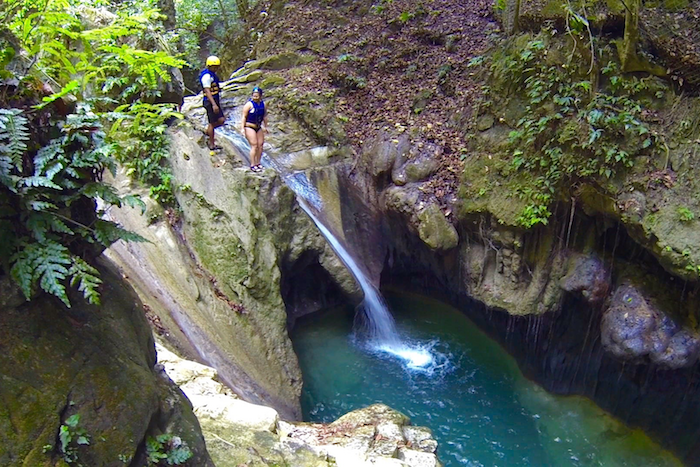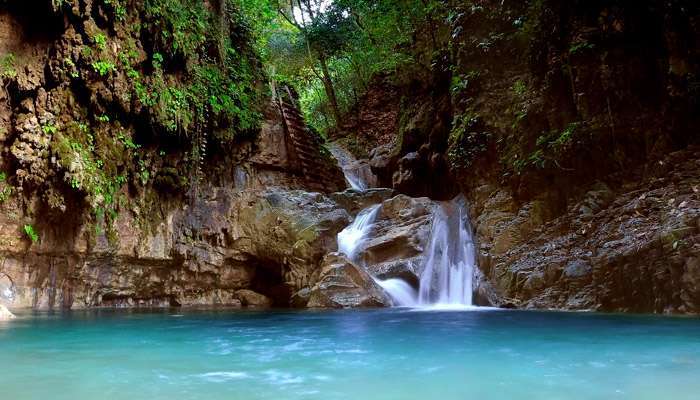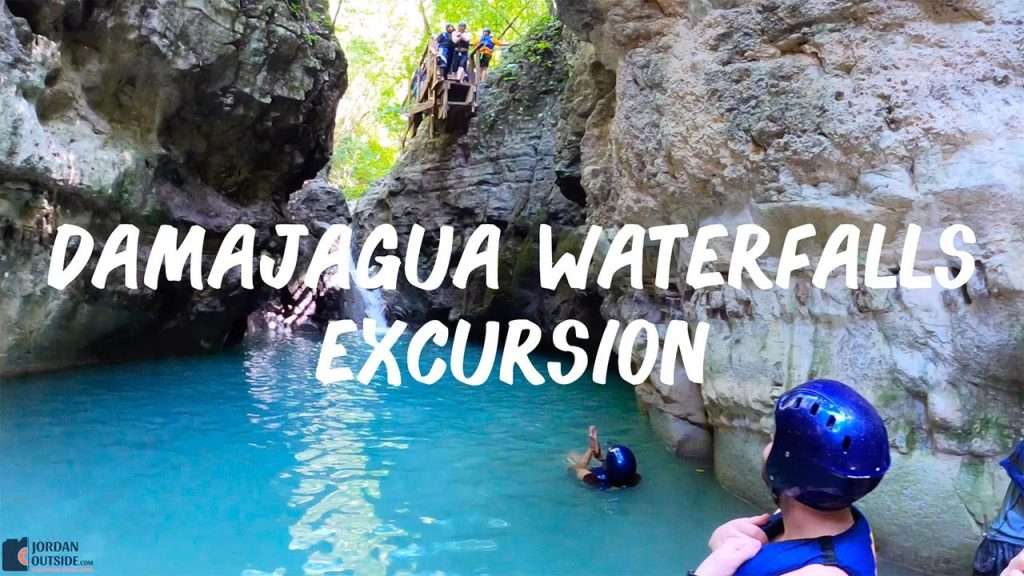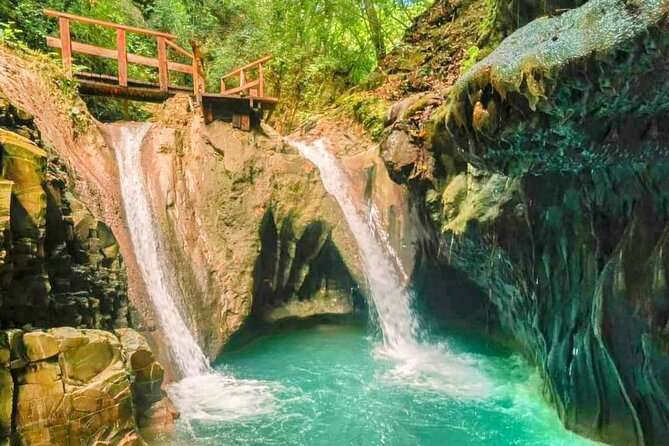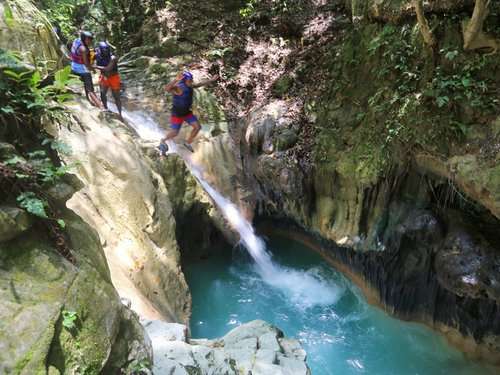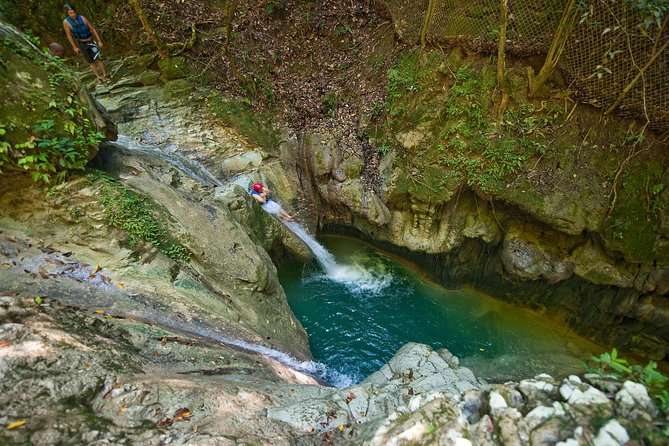
The Damajagua waterfalls are a set of 27 waterfalls that are part of the Isabel de Torres National Park, in the province of Puerto Plata, Dominican Republic. This place is one of the most visited tourist attractions in the area, due to its natural beauty and its historical and cultural value.
The indigenous Taino people, the ancestral inhabitants of the Caribbean islands, are believed to have lived near these waterfalls more than 500 years ago, before the arrival of Europeans. The Taínos were a people from South America, more specifically from the mouth of the Orinoco River, which spread throughout the Greater Antilles and the north of the Lesser Antilles.
The social and political organization of the Taínos

The Taínos lived in large communities called yucayeques, which were governed by a cacique, the highest chief of the tribe. The chief was in charge of protecting the community in the event of war, administering justice and directing religious ceremonies. The chief lived in a rectangular house called caney, where his family also resided.
The Taínos had four social classes: the naborías, who were the lower class made up of hunters, villagers, fishermen and farmers who did the heaviest work; the bohiques, who were the priests or healers who represented religiosity; the nitaínos, who were the noble class and who were relatives of the chiefs, warriors and artisans; and the caciques, who came from the Nitaínos and who were the leaders of the Yucayeques.
The economy and culture of the Tainos

The Tainos were mainly dedicated to agriculture, hunting and fishing. They grew cassava, corn, sweet potatoes, beans, pumpkin, pineapple, guava and other fruits. They made cassava from cassava, which was the basis of their diet. They also raised animals such as dogs, iguanas, macaws and parrots. To fish they used nets, hooks, harpoons and wooden rafts.
The Taínos made clay pottery, such as pots, jars, vessels and other homemade utensils. They also carved wood, bone, stone and coral to make decorative and religious objects, such as cemíes, which were figures that represented their gods or spirits. The Tainos decorated their bodies with paintings, feathers, necklaces, earrings and other accessories. They played games and dances like the areíto, which was a party with music, singing and dancing.
The religion and worldview of the Tainos

The Tainos were polytheistic, that is, they believed in several gods or supernatural beings. The main god was Yocajú Bagua Maorocotí or Yokiyú, who was the god of good, the creator of the world and the father of the other gods. The most important goddess was Atabex, who was the goddess of the moon, the mother of the gods and the protector of women. Other gods were Guabancex, the goddess of wind and storms; Juracán, the god of hurricanes; Boinayel, the god of rain; and Marohu, the god of the sun and drought.
The Tainos believed that the world was divided into three parts: the sky, the earth and the underworld. The sky was the place where the gods and the spirits of the ancestors lived. The earth was the place where humans and animals lived. The underworld was the place where evil spirits and the souls of the dead resided.
The relationship of the Tainos with the Damajagua waterfalls

The Taínos had a close relationship with the Damajagua waterfalls, which they considered a sacred and magical place. The waterfalls were a source of fresh water, food and entertainment for the Taínos, who used them for fishing, bathing and playing. The Taínos believed that the waterfalls were the home of some cemíes, like the rain god Boinayel, who sent them water to irrigate their crops and fill their jars. They also believed that waterfalls were the place where they communicated with the gods and spirits, through offerings, rituals and requests.
The Tainos admired the beauty and strength of waterfalls, which reflected the harmony and balance of nature. Waterfalls were a symbol of life, fertility and abundance for the Taínos, who respected and cared for them as part of their culture and identity.
The legend of the Damajagua waterfalls

A long time ago, when the Taínos lived in harmony with nature, there was a young man named Damajagua, who was the son of the chief of his yucayeque. Damajagua was brave, generous and curious, and he liked to explore the forests and rivers of his land.
One day, Damajagua ventured further than usual and came to a place where the river split into several branches, forming beautiful waterfalls and pools of crystal clear water.

Damajagua was amazed by the landscape and decided to bathe in one of the pools. As he submerged in the water, he felt a presence by his side. It was a young woman of brown skin, black hair and green eyes, who looked at him with a smile. Damajagua fell in love with the girl at once, who introduced herself as Yara, the daughter of Boinayel, the god of rain.
Yara told Damajagua that she had also fallen in love with him, and that she wanted to be with him forever. But she warned him that her father would not agree with their love, because he was very jealous and did not want his daughter to mix with mortals. Damajagua told Yara that he did not care about her father’s anger, and that he was willing to face him for her. Yara thanked him for his courage, and told him that they would meet the next day in the same place.
Damajagua returned to his yucayeque, but he could not sleep or eat, thinking only of Yara. The next day, he got up early and ran to the waterfalls, where he found her waiting for him.
They hugged and kissed, and swore eternal love. But their happiness lasted little, because the sky darkened and a thunder was heard. It was Boinayel, who had discovered his daughter’s romance and was furious.

Boinayel came down from the clouds and approached Damajagua, telling him that he was going to punish him for daring to touch his daughter. Damajagua was not intimidated and told him that he loved Yara and that nothing and no one would separate them. Boinayel became more angry and threw a lightning bolt at Damajagua, but Yara intervened and received the impact. Damajagua screamed in pain and hugged Yara, who was dying in his arms. Yara told Damajagua not to cry for her, and that she would always remember him. Then, she closed her eyes and died.
Damajagua could not bear the loss of his beloved, and decided to follow her fate. He took Yara’s body and threw himself into the void, falling down one of the waterfalls. Boinayel, seeing what he had done, regretted his anger and cried bitterly.
His tears turned into more water, which increased the flow of the river and formed more waterfalls. Boinayel wanted to honor the memory of his daughter and his lover, and turned them into two cemíes, which were carved in the rocks of the waterfalls. Since then, the Taínos called that place Damajagua, in honor of the young man who gave his life for love.

If you liked this local story about how Damajagua waterfalls got their name, please leave us a comment and share. Thank you
